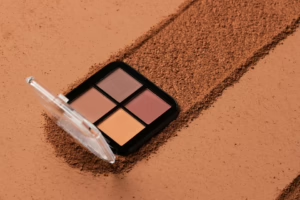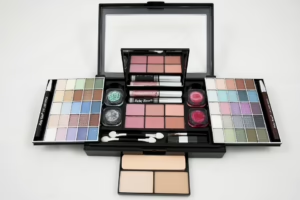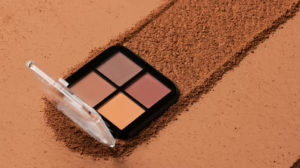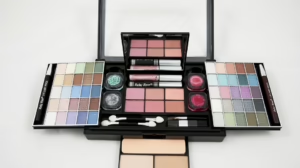Peels, Lasers, and More: Understanding Advanced Skin Treatments
In the pursuit of flawless skin, advancements in aesthetic dermatology offer a myriad of options, from chemical peels to laser therapies. These treatments are designed not just to address superficial concerns like sun damage and acne scars but also to promote overall skin health. In this article, we’ll delve deep into the world of advanced skin treatments, exploring their mechanisms, benefits, risks, and the latest innovations in the field.
1. The Science of Skin
Skin is the body’s largest organ, serving as a barrier between the external environment and internal systems. Composed of multiple layers—epidermis, dermis, and subcutaneous tissue—each layer plays a distinct role in skin health and appearance. With age, environmental factors, and lifestyle choices, the skin undergoes changes that may lead to various aesthetic concerns.
1.1 Aging and Skin Changes
As we age, skin loses collagen and elastin, leading to wrinkles, sagging, and reduced radiance. Environmental damage from UV exposure causes pigmentation issues like sunspots and contributes to skin texture problems. Stress, diet, and hormonal fluctuations can also affect skin health, making effective skincare and treatment essential for many individuals.
2. Chemical Peels
Chemical peels are one of the oldest and most popular treatments in dermatology. They involve applying a solution to the skin to exfoliate the top layers, promoting new skin growth.
2.1 Types of Chemical Peels
Chemical peels are typically classified into three categories:
-
Superficial Peels: These use mild acids like alpha-hydroxy acids (AHAs) to gently exfoliate the skin. They’re suitable for improving texture and treating mild pigmentation.
-
Medium Peels: These often use trichloroacetic acid (TCA) to penetrate deeper into the skin. They can address issues like moderate sun damage and fine lines.
-
Deep Peels: Utilizing stronger agents like phenol, deep peels can treat more severe skin damage but often require longer recovery times.
2.2 Benefits and Risks
The benefits of chemical peels include:
- Enhanced skin texture and tone.
- Reduction in fine lines and wrinkles.
- Diminished appearance of scars and acne.
However, risks may include:
- Redness and swelling.
- Peeling and crusting.
- Changes in skin pigmentation, especially in individuals with darker skin tones.
2.3 What to Expect During the Procedure
During a chemical peel, a practitioner will cleanse the skin and apply the chemical solution. Depending on the strength of the peel, it may feel like a mild stinging or burning sensation. The duration of the procedure varies, but it typically lasts between 30 minutes to an hour.
3. Laser Treatments
Laser technology has revolutionized dermatological treatments. By targeting specific skin concerns with precision, lasers can treat a wide range of issues.
3.1 Types of Lasers
Various types of lasers are used in dermatology, each serving different purposes:
-
Ablative Lasers: These remove the outer layer of skin, which promotes collagen remodeling. Examples include CO2 and Erbium lasers, effective for deeper wrinkles and scars.
-
Non-Ablative Lasers: These stimulate collagen production without damaging the skin’s surface. They use lower energy levels and are ideal for mild skin issues.
3.2 Benefits and Risks
Benefits of laser treatments include:
- Precision targeting of problem areas.
- Minimal downtime with non-ablative lasers.
- Long-lasting results.
Risks may consist of:
- Swelling and redness.
- Scarring or changes in skin pigmentation.
- Rarely, infections.
3.3 The Laser Treatment Process
Before the procedure, a consultation will help determine the best laser type for individual needs. Most treatments last from a few minutes to an hour, with the potential for numbing creams to alleviate discomfort. Post-treatment, the skin may appear red and swollen but generally heals within a week for non-ablative procedures and longer for ablative ones.
4. Microdermabrasion
Microdermabrasion is a non-invasive procedure that exfoliates the skin by using a device that sprays fine crystals to gently sand the skin.
4.1 Benefits and Risks
Microdermabrasion can help:
- Improve skin texture.
- Reduce the appearance of age spots.
- Enhance the efficacy of topical products by allowing better absorption.
Potential risks include:
- Temporary redness.
- Sensitivity and minor abrasions.
4.2 What to Expect During Treatment
The procedure typically lasts around 30 minutes. After cleansing the skin, the practitioner will use a handheld device to exfoliate the surface. There’s usually minimal downtime, making it a popular choice for those seeking a quick skin refresh.
5. Microneedling
Microneedling involves using tiny needles to create micro-injuries in the skin, promoting the body’s natural healing processes and stimulating collagen production.
5.1 Benefits and Risks
Microneedling offers several advantages, such as:
- Improved skin texture and firmness.
- Reduction in scars and enlarged pores.
- Enhancement of product absorption.
Risks might include:
- Redness and swelling.
- Minor bruising or infection if not performed properly.
5.2 The Microneedling Process
Typically, the procedure begins with applying a numbing cream. After the area is prepared, a device with fine needles is used to create micro-injuries. The treatment takes about 30 minutes to an hour, and while recovery is swift, some redness may persist for a few days.
6. Advanced Cosmeceuticals
With the growing focus on skin health, advanced cosmeceuticals—products that blend cosmetics and pharmaceuticals—now play a crucial role in skincare. These formulations often contain active ingredients backed by scientific research and are designed to address specific skin concerns.
6.1 Top Ingredients to Look For
-
Retinoids: Known for their anti-aging properties, retinoids promote cell turnover and collagen production.
-
Vitamin C: An antioxidant that protects against environmental damage and brightens the complexion.
-
Hyaluronic Acid: A powerful humectant that retains moisture, offering hydration to the skin.
-
Peptides: Amino acids that can enhance skin barrier function and promote collagen synthesis.
6.2 Incorporating Cosmeceuticals into Your Routine
When incorporating cosmeceuticals, it’s essential to start slowly—particularly with potent ingredients like retinoids. A consultation with a skincare professional can help tailor a regimen that best addresses individual concerns.
7. The Role of Professional Guidance
While many advanced skin treatments promise remarkable results, the importance of consulting a qualified dermatologist cannot be overstated.
7.1 Personalized Treatment Plans
A skin expert will assess individual skin types, lifestyle, and concerns to devise a personalized treatment plan. This plan may combine various modalities for optimal results.
7.2 Understanding Limitations and Expectations
It’s crucial to have realistic expectations. No treatment guarantees perfect outcomes, and maintenance is often necessary. Understanding the limits of what each procedure can achieve ensures satisfaction and allows for informed choices.
8. Innovations in Skin Treatments
The field of dermatology is ever-evolving, with new technologies and treatments continually emerging. Among recent innovations are:
8.1 Combination Therapies
Combining treatments, such as pairing microneedling with PRP (Platelet-Rich Plasma) therapy, has shown promise in enhancing results. PRP can accelerate healing and boost collagen production, providing a synergistic effect.
8.2 Home Device Technologies
Advancements have led to the development of at-home devices that mimic professional treatments, such as LED masks and at-home microneedling devices. While convenient, it’s essential to ensure safety and efficacy when using these devices.
8.3 Genetic and Personalized Treatments
Emerging research into personalized skincare based on genetic makeup is paving the way for tailored treatments. Understanding how individual genetic profiles influence skin health could redefine skincare regimens in the future.
9. Conclusion
Navigating the world of advanced skin treatments can be overwhelming, but understanding the options, benefits, and risks is crucial. Whether opting for chemical peels, laser treatments, or innovative cosmeceuticals, each approach offers unique advantages tailored to individual needs.
The key to achieving and maintaining healthy skin lies not only in the treatments themselves but also in a comprehensive approach that includes professional guidance, diligent at-home care, and realistic expectations. As technology continues to evolve, individuals can look forward to discovering even more effective and personalized skin solutions in the pursuit of beautiful skin.
Modern Footnote Sources
-
American Academy of Dermatology. “Chemical Peels.” AAD. Accessed Oct 2023.
-
Mayo Clinic. “Laser Skin Resurfacing.” Mayo Clinic. Accessed Oct 2023.
-
Dermatologic Surgery Journal. “The Evolving Role of Chemical Peels.” Dermatol Surg. 2023.
Each treatment brings unique advantages and potential drawbacks, making it essential to consult with a qualified professional before embarking on a skincare journey.


























Add Comment